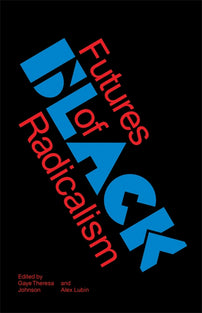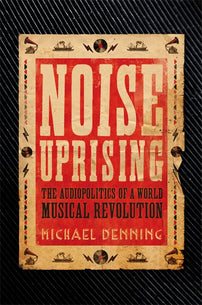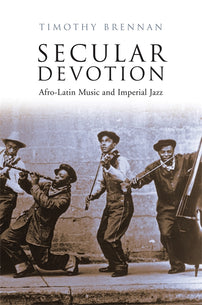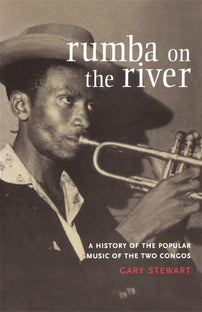“The People Who Keep on Going”: A Futures of Black Radicalism Listening Party, Vol. I
A mixtape for the Black Radical Tradition.
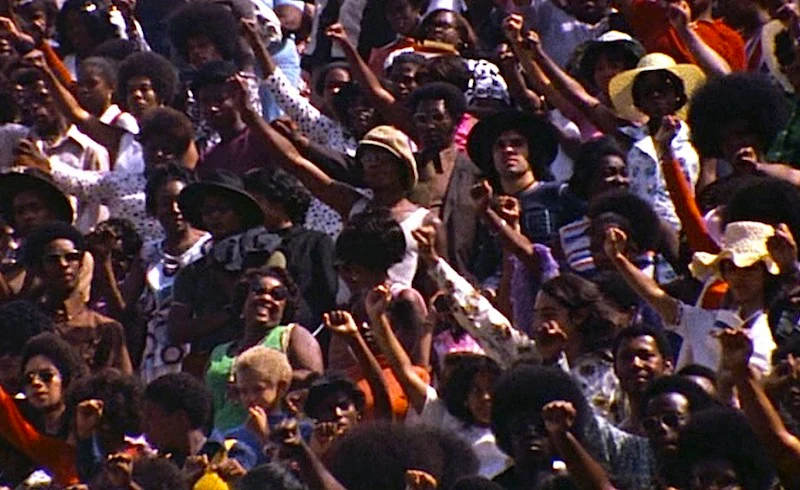
For their contribution to Futures of Black Radicalism, Shana L. Redmond and Kwame M. Phillips created a playlist of music that forms a part of the black radical tradition. They have since turned that playlist into a mix, including contextualizing interludes — embedded below, along with the introduction to their chapter, which also includes short essays on each track.
I tried to write poems like the songs they sang on Seventh Street — gay songs, because you had to be gay or die; sad songs, because you couldn’t help being sad sometimes. But, gay or sad, you kept on living and you kept on going. Their songs — those of Seventh Street — had the pulse beat of the people who keep on going.
—Langston Hughes, The Big Sea 1
What do you hear when we say “Black Radical Tradition”? Do you hear Fela’s sax as it cries after his mother’s murder? The defiant tremolo of Marian Anderson’s mezzo or the callouses on the fingertips of Sister Rosetta? Do you hear the claves of Havana, the tambourines of Rio de Janeiro, and the boom-bap machines of the Bronx in the same song, the same measure? What about the vectors of language — Xhosa, Portuguese, and Patois — sung across the Atlantic, the Mediterranean, and the Pacific, in every direction? Do you hear the “accretion, over generations, of collective intelligence gathered from struggle”? 2
If you knew, you’d listen. The tradition is brilliantly displayed and imagined and practiced anew through sound; Robinson hints at this fact, encouraging readers of Black Marxism to “examine how the tradition insinuated itself . . . into the blues composed by Rainey and all the women named Smith.” 3 Indeed, Ma and Clara, Bessie, Trixie, Laura, and Mamie carried dangerous knowledges with them that altered the course of popular culture and challenged the overdetermined nature of Black social consciousness. 4 What follows is a listening party — a preliminary opportunity to hear the long genealogies of the tradition by way of a method that complicates and enlivens its histories, exposing its roots and carrying them forward as sample, metaphor, and trace throughout our shared “changing same.” 5 This playlist is a guided meditation from keepers of the tradition who, with horns and machines and keys and voice, assist us in understanding how music creates “a world of pleasure, not just to escape the everyday brutalities of capitalism, patriarchy, and white supremacy, but to build community, establish fellowship, play and laugh, and plant seeds for a different way of living, a different way of hearing.” 6
These are the liner notes for a hypothesis in wax — the inadequate words that trail behind sound’s experiments of desire, hope, and ambition. It is a people’s songbook, a soundtrack to the improvisational life and living of Blackness under the control of white supremacy. This is an effort to pull forward and give a name to what our bodies tell us with every needle drop, to hold tight that which combines individual voice and people’s rebellion, to play together in the porous force field that incubates new knowledge and launches our freedom dreams. Our hope is to relay the diaspora meters that shake and raise the earth to move the feet of millions and expose its historical spine from the drum to the drum machine.
Inspired by the revelations and revolutions of Cedric Robinson’s oeuvre, these songs were mined from the layers of twentieth-century Black thought and practice that animate our relationship to the past, present, and future conjunctures of our living. As the “Vol. I” in the chapter title suggests, this soundscape is not exhaustive. It is, in many respects, speculative in its curation of approaches, voices, local and diasporic conditions and beliefs. It is a repetitive introduction to the sound of a global Seventh Street that trembles with the “pulse beat of the people who keep on going.”
Track List:
Max Roach ft . Abbey Lincoln, “Freedom Day” (1960)
Syl Johnson, “Is It Because I’m Black?” (1967)
Hank Ballard, “Blackenized” (1969)
Derrick Harriott, “Message from a Black Man” (1970)
Miriam Makeba, “KwaZulu (In the Land of the Zulus)” (1965)
Cipher J.E.W.E.L.S, “2000 Years” (2002)
THEESatisfaction, “On What It Means to Be Black” (2010)
OCnotes, “Radio Nat Turner” (2014)
Kendrick Lamar, “Alright” (2015)
Death, “Politicians in My Eyes” (1976)
Dennis Brown, “Revolution” (1983)
Janelle Monáe and Wondaland, “Hell You Talmbout” (2015)
Ray Angry ft . Nadia Washington & Chris Potter, “Celebration of Life Suite: Awareness & Revolution” (2015)
D’Angelo and the Vanguard, “The Charade” (2014)
Thundercat ft . Mono/Poly, “Paris” (2015)
Notes:
1. Langston Hughes, The Big Sea (New York: Knopf, 1940).
2. Cedric J. Robinson, Black Marxism (Chapel Hill: University of North Carolina, 1983), xxx.
3. Ibid., xxxii.
4. Angela Y. Davis, Blues Legacies and Black Feminism (New York: Pantheon, 1998).
5. Amiri Baraka, Black Music (New York: W. Morrow, 1967).
6. Robin D. G. Kelley, Freedom Dreams (Boston: Beacon Press, 2002), 11.
Shana L. Redmond is Associate Professor of Musicology in the Alpert School of Music and African American Studies at the University of California, Los Angeles. She is the author of Anthem: Social Movements and the Sound of Solidarity in the African Diaspora, and coeditor of Critical Ethnic Studies: A Reader.
Kwame M. Phillips is Assistant Professor in the Department of Communications, John Cabot University, specializing in visual and sensory media production, ethnographic documentary, visual anthropology and audio culture. Phillips’s work centers on multidisciplinary engagement and focuses on resilience, race, and social justice.
[book-strip index="1" style="display"]
